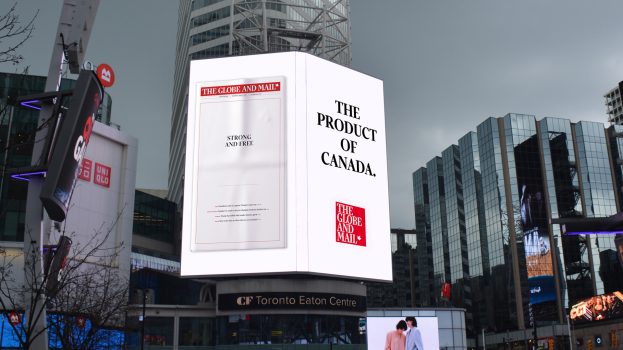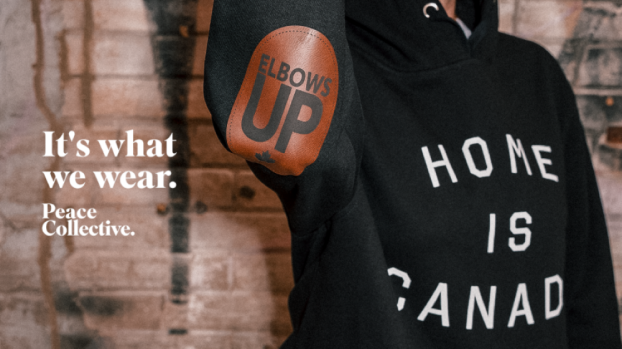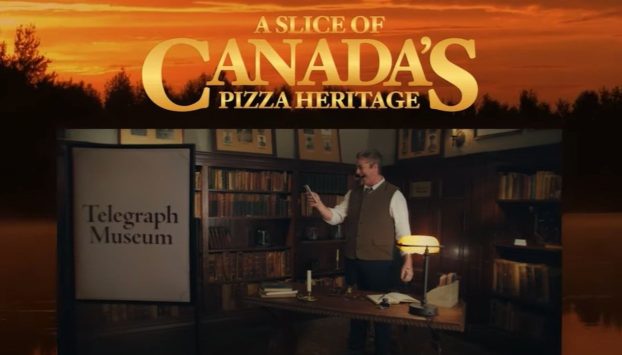Media planners would be the first to say the genesis of an ad campaign needs both a mommy and a daddy. The creative department’s input is of course crucial, they’d say, to maintaining an advertiser-client’s brand standards or sparking a fresh idea in presentation.
But the days of invisible planners and researchers hunkering in back rooms crunching numbers and serving up a media platter for the creative department’s big ideas are long gone: Media experts have their own companies, advertiser-clients are becoming more sophisticated in the buying matrix, and deals are being done with media conglomerates that, on occasion, make traditional creative an afterthought.
‘The role of the media person is growing in value to the end user,’ says Doug Checkeris, managing partner at The Media Company in Toronto. ‘There is greater collaboration between media and creative people. But in the long run, will there be a shift in power? Absolutely, with the increased importance on making sure we have the right access points.’
At the heart of the issue is fragmentation. The media buying challenge has been shattered by the introduction of new media, expanding old media, non-traditional venues, promotion and a host of other platforms suitable for selling products, services and ideas. Choosing where an ad goes, in what format and how frequently, requires a complex analysis of audience sizes and demographics delivered by media options catering to smaller and more specialized niches.
Still, out of the chaos comes power, because sorting out the endless media possibilities is the valued expertise.
Media experts, for instance, were responsible for bringing Pfizer’s breath-freshening Listerine PocketPaks – ‘The Action Hero for Your Mouth’ – an opportunity to tap its youth-skewing demographic in the dark.
Late last year, Cineplex theatres presented media executives like Lynn Mayer, senior VP and director of media planning at Bates Canada in Toronto, with a novel marketing tool: a plastic card on which messages can be encoded and read only with a red light. Because of competition for the product, Mayer had less than two days to convince a client that the unique opportunity was good strategy. Listerine bit, with a $150,000 Listerine CineScramblers campaign rolling out last January and February in 20 Greater Toronto theatres.
‘It made huge sense,’ says Mayer. ‘The cinema environment is youthful and hip and a great way to connect with the consumer. Our client, meanwhile, was able to embrace something new and innovative.’
Creative, through J. Walter Thompson, came after the decision to buy the opportunity, with the agency responsible for the posters and other in-cinema collateral materials. Cineplex handled the design of the encoded card, which was remade to emulate the plastic dispenser package and translucent strips of the PocketPaks.
Cinema goers were encouraged to buy beverage-and-popcorn combinations at the concession (which won praise from managers seeking to increase high-margin sales) and received both PocketPak samples and the promotional premiums. In the theatres, red slides projected on-screen before the film allowed consumers to decode their cards to see if they won. A Web-based component of the campaign also allowed consumers to enter a sweepstakes for action-themed DVDs.
Overall, 650,000 movie goers participated in the program and 60,000 Web users logged in, enough success to plan for a national launch of the promotion in 2003, says Mayer.
‘Media is no longer just crunching numbers,’ says Mayer. ‘[The Listerine campaign] indicates that more than ever, media is an equal partner with creative, that the two go hand-in-hand.’
For International Home Foods’ Puritan Stews, the right access points to the consumer were media options that touched the advertiser’s primarily male consumer – a consumer who, according to demographic and psychographic analysis, likes to fish, says Sue Alexander Ash, VP and group account director at The Media Company.
The buyers investigated the fishing media, coming up with fishing guru Bob Izumi and his host of media properties, including the Real Fishing Show (syndicated to 35 stations including Outdoor Life and Rogers Sportsnet), Real Fishing Magazine, Real Fishing Radio and realfishing.com.
‘He loves the product,’ says Alexander Ash, a happy coincidence discovered after the ‘Gone Fishing with Puritan Stew and Bob Izumi’ deal was sealed. ‘He buys it by the case and takes it on the road for his fishing trips.’
Puritan negotiated a $100,000 promotional agreement with Izumi, getting his on-air endorsement, sponsorship of the show, ads in the magazine and plugs online during March, with fulfillment in May and June.
To round out the effort, Puritan Stews sponsored the fishing ‘Tip of the Week,’ with cans of stew directing consumers to the promotion. The grand prize? A boat and a five-day fishing trip with Izumi at his private lodge on Bark Lake.
Agency creative wasn’t involved, says Alexander Ash, with all the campaign-related tasks done in collaboration Izumi’s producers.
Measuring the campaign through contest entries, the media planners hoped for 15,000 entries, but logged more than 29,000.
For Subway, meanwhile, The Media Company came up with a clever way to bring American spokesperson Jared Fogel and his dramatic weight loss story to Canada. Advertising standards in Canada restrict what an advertiser can claim about weight loss, so the buyer went with a series of non-promotional interstitial spots called ‘Health in a Heartbeat’ featuring Fogel interviewing a cardiovascular specialist.
Calexis, a creative boutique in Toronto, was brought in to maintain the creative shape of the four one-minute interstitials, which aired on CTV. The series was ‘brought to you by’ Subway and the interstitials were paired with a traditional 30-second brand ad.
CTV produced the ads in-house for $90,000, about a third of what it might have cost via an independent producer, estimates Ellen Smith, director of events at The Media Company. The buy was $600,000 over two cycles in late 2001 and early 2002 – a relative steal, with the interstitials costing about 60% of the cost of 30-second spots.
Results, meanwhile, were documented by a doubling in Web site visits after the interstitials ran, and perhaps the ultimate accolade from Subway: the client has recently asked its U.S. ad teams to replicate the program down south.
In yet another case, a media company created a new opportunity for an advertiser-client that a traditional ad agency might not have been able to turn around.
In an ongoing effort that broke late January, Alliance Atlantis sold Altoids breath mints a year-long promotion – the advertiser’s first television exposure.
Altoids bought the ‘Curiously Strong Mint for Curiously Strong Cinema’ proposal, a promotion in which the advertiser sponsors a movie airing on Showcase, an Alliance Atlantis network. The spots, created by the graphics department at Alliance Atlantis, featured animated Altoids mints breaking out of their container, with the opened lid creating a ‘screen’ to preview the next sponsored movie.
MediaVest Worldwide in Toronto secured the deal, while J. Walter Thompson consulted on the creative.
‘There was an advantage to [the advertising agency],’ says David O’Brien, VP of creative services at Alliance Atlantis Broadcasting. ‘We were fast and did it at a rate that they couldn’t be competitive with. They were consulted throughout and ended up looking like the experts. They don’t see us as a threat in those situations.’























